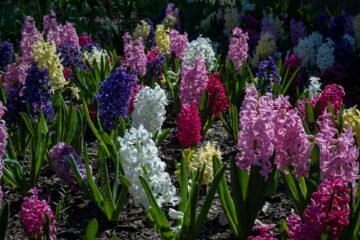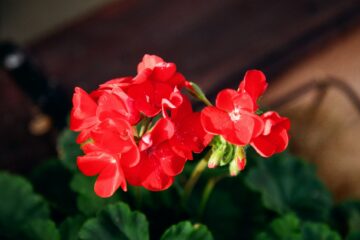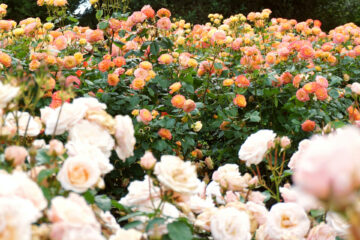A flourishing garden is not only a feast for the eyes but also a vital habitat for attracting pollinators such as bees, butterflies, and other beneficial insects. These creatures play a crucial role in pollinating plants, ensuring their reproduction and the production of fruits, vegetables, and seeds. By selecting the right plants for your garden, you can create a pollinator-friendly environment that supports biodiversity and enhances the beauty of your outdoor space. Let’s explore some of the best shrubs and flowering plants that are particularly effective at attracting and nourishing pollinators.
**1. ** Lavender (Lavandula spp.): Known for its fragrant blooms and striking purple hues, lavender is a favorite among bees and butterflies. Bees are especially drawn to the nectar-rich flowers of lavender, making it an excellent choice for attracting these important pollinators to your garden. Additionally, the soothing aroma of lavender can create a calming atmosphere and attract beneficial insects.
**2. ** Butterfly Bush (Buddleja species): As the name suggests, butterfly bush is a magnet for butterflies due to its abundant clusters of nectar-rich flowers. These shrubs come in various colors, offering a visual feast for both humans and pollinators. By planting butterfly bush in your garden, you can provide a vital food source for butterflies while enjoying their graceful presence.
**3. ** Bee Balm (Monarda didyma): Bee balm, also known as bergamot or Oswego tea, is a native plant that boasts vibrant flowers in shades of red, pink, or purple. Bees, hummingbirds, and butterflies are all attracted to the fragrant blooms of bee balm, making it a valuable addition to any pollinator garden. This plant not only provides nectar for pollinators but also adds a splash of color to your landscape.
**4. ** Coneflower (Echinacea purpurea): Coneflowers are not only cherished for their medicinal properties but also valued for their ability to attract pollinators. The daisy-like blooms of coneflowers are a favorite of bees and butterflies, who flock to the abundant nectar and pollen they offer. Planting coneflowers in your garden can create a vibrant oasis for pollinators while adding a touch of natural beauty to your outdoor space.
**5. ** Salvia (Salvia spp.): With its spiky blooms in shades of blue, purple, or red, salvia is a popular choice for attracting bees and hummingbirds. The tubular flowers of salvia are well-suited for pollinators with long tongues, such as hummingbirds, who seek out the nectar hidden within. By planting salvias in your garden, you can create a haven for these delightful creatures and enjoy a burst of color throughout the growing season.
**6. ** Clover (Trifolium spp.): Often considered a weed, clover is actually a valuable plant for pollinators, particularly bees. The tiny flowers of clover are rich in nectar and provide an important food source for bees, making it a beneficial addition to any pollinator garden. By letting clover grow in your lawn or incorporating it into your garden beds, you can support bee populations and promote biodiversity in your yard.
**7. ** Sunflowers (Helianthus annuus): Sunflowers are not only a cheerful addition to any garden but also a beacon for bees and other pollinators. The large, showy blooms of sunflowers produce ample pollen and nectar, attracting a wide range of insects and birds. Planting sunflowers in your garden can create a stunning focal point while providing essential resources for pollinators.
**8. ** Milkweed (Asclepias spp.): Milkweed is a vital plant for monarch butterflies, serving as the sole food source for their caterpillars. By planting milkweed in your garden, you can support monarch populations and provide a necessary host plant for these iconic insects. The bright flowers of milkweed also attract bees and other pollinators, making it a valuable addition to any pollinator-friendly landscape.
In conclusion, cultivating a garden that is welcoming to pollinators is not only beneficial for these vital creatures but also rewarding for the gardener. By selecting a variety of shrubs and flowering plants that are particularly attractive to bees, butterflies, and other pollinators, you can create a thriving ecosystem in your own backyard. Whether you have a small balcony garden or a sprawling landscape, incorporating pollinator-friendly plants can make a significant impact on biodiversity, promote plant reproduction, and enhance the beauty of your outdoor space. Embrace the magic of nature by inviting pollinators into your garden and witnessing the interconnectedness of all living beings.


